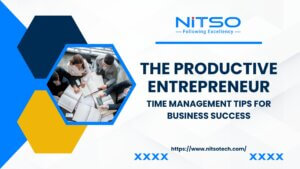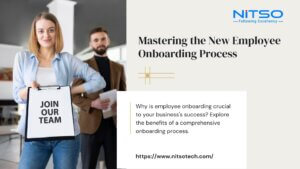An effective onboarding process is crucial for ensuring success in high-impact roles. According to a survey by Glassdoor, companies with a strong onboarding program improve new hire retention by 82% and productivity by over 70%.
However, 34% of companies do not have a structured approach to onboarding. Without proper onboarding, employees in high-impact roles like sales, engineering, or executive positions can feel overwhelmed, and disengaged, and are more likely to underperform or leave the organization.
In this article, we will discuss onboarding strategies that can set up employees in these critical roles for long-term achievement. Implementing the right onboarding framework leads to faster ramp-up times, better performance, and higher retention.
Table of Contents
Define High-Impact Roles
What exactly are high-impact roles? These are positions that have an outsized influence on an organization’s performance and ability to achieve strategic goals. While every role contributes, certain ones are especially critical for driving revenues, innovation, operations, and culture. For example, high-impact roles typically include:
- Sales – Bringing in business is essential, so onboarding salespeople quickly is crucial. They need to build pipelines and close deals.
- Engineering – In technology companies, engineers build the products. Onboarding them swiftly helps them contribute to new releases faster.
- Executives – Whether C-suite or VP level, executives set the vision and enable execution. Their onboarding ensures alignment.
- Customer-facing – Client success, support, and service teams manage key customer relationships. Strong onboarding enhances customer satisfaction.
- Operations – Streamlining processes falls on operational roles. Their onboarding should focus on productivity.
Why onboarding is critical for these roles?
With high-impact roles directly driving core business outcomes, having a solid onboarding process is crucial. Otherwise, bad onboarding can lead to disastrous consequences, such as:
- Lost revenues – Salespeople who don’t ramp up quickly can miss quotas. Engineers not building features fast enough delays releases. Executives not aligned to strategy waste resources on the wrong initiatives.
- Dissatisfied customers – If client-facing team members don’t get up to speed on your products/services, they can’t effectively support customers. This results in churn.
- Operational inefficiencies – Operations roles that haven’t been properly onboarded may make expensive mistakes that hamper productivity.
- Disengaged employees – Feeling lost and frustrated due to poor onboarding causes high-impact hires to lose motivation.
- High turnover – 78% of turnover occurs within the first 90 days. Inadequate onboarding is a top reason people leave new jobs. Replacing high-impact hires is extremely expensive.
The stakes are high, as one bad onboarding experience for a high-impact employee could result in catastrophic damage. Well-structured onboarding sets them up for faster success in achieving targets and business goals. Investing in onboarding best practices pays dividends.
How To Setup New High-Impact Hires For Success Through Onboarding
Strategy 1: Align onboarding with role expectations
The first step in effective onboarding for high-impact roles is setting clear expectations upfront of what the role entails. This involves:
- Defining core responsibilities – Provide new hires with a detailed job description highlighting their primary duties. This gives them clarity on what they need to focus on.
- Explaining key performance indicators (KPIs) – Set expectations around the specific metrics and results they will be measured on. For example, sales targets, product delivery timelines, budget goals, etc.
- Outlining critical processes – Walk through the most important workflows, systems, and tools required to execute the role. Having them understand core processes early allows faster productivity.
- Introducing stakeholders – Identify key cross-functional partners, leadership, and team members they will interact with. Describe each stakeholder’s role and how they will collaborate together.
- Illustrating success – Share examples of what achievement looks like in this role. This sets a vision of the intended outcomes.
Taking the time upfront to educate new hires on exactly what will be expected of them in their high-impact role ensures alignment with priorities from day one. They will ramp up faster knowing what they need to deliver.
Strategy 2: Assign mentors/buddies early on
Don’t just throw high-impact hires into the deep end. Instead, assign them onboarding mentors or peer buddies early in their tenure to provide guidance. These mentors/buddies can:
- Answer questions – New hires will have lots of questions their manager may not have time for. Mentors can fill in the gaps.
- Explain processes – A buddy from the same department can walk through day-to-day workflows in detail.
- Introduce colleagues – A mentor can facilitate connections to key stakeholders across the organization.
- Share insider knowledge – They can provide institutional knowledge and unwritten rules of the workplace.
- Offer feedback – Mentors can provide regular input on performance and growth opportunities.
- Provide reassurance – A buddy can validate emotions and challenges during a tough transition.
These supportive relationships make new hires feel less alone. Humans helping guide and socialize high-impact employees leads to greater engagement, productivity, and retention.
Strategy 3: Schedule check-ins and provide feedback
It’s crucial to monitor the progress of high-impact hires and provide continuous feedback. Build this into the onboarding program by:
- Setting regular 1:1s – Managers should have weekly touchpoints with new hires for the first month, then every other week. This provides designated time to check on ramp-up and offer guidance.
- Conducting 30/60/90-day reviews – More comprehensive evaluations at each of these milestones look at overall onboarding performance. Any roadblocks can be identified and addressed.
- Gathering feedback often – Don’t just give feedback, solicit it through pulse surveys, meetings, and informal chats. Learn what support new hires need.
- Observing work directly – Sit in on sales calls, engage with feature releases, and review work products. Direct observation offers insights for improvement.
- Providing feedback tactfully – Feedback should be kind, constructive, and focused on goals. Avoid overwhelming new hires.
- Iterating onboarding – Use feedback to continually refine and improve the onboarding experience.
Frequent and compassionate check-ins ensure high-impact hires receive the coaching needed to excel rather than flounder. This helps onboarding stick to the landing.

Strategy 4: Make onboarding an immersive experience
Instead of just training new hires in a classroom, make onboarding an immersive and experiential process. For high-impact roles, this can entail:
- Job shadowing – Have new salespeople shadow customer calls, executives sit in on board meetings, and engineers review products in development. Learning by observing is powerful.
- Short-term assignments – Let new finance analysts manage a small budget early on. Have marketers draft a sample campaign. Giving real work facilitates hands-on learning.
- Cross-functional meetings – Include high-impact hires in critical meetings with other departments to see cross-collaboration in action.
- Field trips – Take new customer support reps onsite to see customer environments firsthand. Give product designers access to end users for research.
- Rotational programs – Have high-potential hires rotate through different departments for exposure to the full business.
- After action reviews – Conduct debriefs on key assignments to discuss what went well and the lessons learned.
- Gamification – Incorporate games, contests, and banter to make onboarding fun and engaging.
Immersive, experiential onboarding activities make learning stickier and build engagement for high-impact new hires. They ramp up faster by being in the arena early on.
Strategy 5: Leverage technology for onboarding
With remote and hybrid work becoming more prevalent, relying on technology for onboarding is key:
- Digital welcome kits – Send pre-boarding packages virtually with e-documents, video messages, and org charts.
- Onboarding portals – Create centralized hubs with training content, documentation, and resources accessible anytime.
- Virtual reality (VR) – With VR headsets, new hires can tour facilities, engage with avatars, and practice simulated scenarios.
- Mobile software – Well-designed software provides bite-sized training and quick access to people directories, knowledge bases, and checklists.
- Pulse surveys – Use quick digital polls to gather feedback on the fly from new hires.
- Intelligent chatbots – Bots can answer common questions and be available 24/7 as a helpful onboarding resource.
- Collaboration platforms – Tools like Slack and Microsoft Teams facilitate connection and information sharing with onboarding buddies.
- Learning management systems (LMS) – Deliver and track onboarding e-learning courses through an LMS. You can check out Forbes’s article on Best LMS of 2023.
Technology-enabled onboarding allows organizations to provide consistent, self-service experiences at scale that onboard new hires faster. The right digital touchpoints also enhance engagement.
Strategy 6: Evaluate and improve onboarding
To ensure your onboarding program is effective, you must continually evaluate it and make enhancements. Best practices include:
- Gathering feedback – Survey new hires, managers, and mentors on their onboarding experience and areas for improvement. Conduct exit interviews with departing hires.
- Tracking key metrics – Analyze ramp-up time, productivity, performance ratings, and retention rates for newly onboarded employees.
- Reviewing program design – Audit the overall onboarding workflow, content, and activities regularly. Update to address gaps.
- Incorporating new hires’ ideas – They often have novel perspectives on their needs. Solicit their input on program features.
- Benchmarking competitors – Research what peers are doing and identify onboarding innovations worth adopting.
- Iterating thoughtfully – Test changes with small groups first before full rollout. Change takes time.
By continually evaluating and enhancing onboarding, you make it more efficient, engaging, and impactful. This pays off through higher productivity and retention in those critical high-impact roles.
The Bottom Line
Onboarding is a make-or-break moment for high-impact hires. Implementing onboarding best practices like aligning to role expectations, assigning peer buddies, providing continuous feedback, and leveraging technology sets these employees up for faster success.
When companies invest in structured onboarding programs, they are rewarded with more engaged, productive, and retained talent in business-critical roles. The initial effort pays dividends through increased revenues, innovation, customer satisfaction, and operational excellence driven by quickly ramped-up teams. With the high cost of attrition and underperformance, onboarding must be a priority.
Following the strategies outlined in this article will allow organizations to build a robust onboarding process that keeps high-impact employees thriving in their new roles. The key is to start onboarding strong on day one.
FAQs related to onboarding strategies for high-impact roles
Why is onboarding important for high-impact roles?
Onboarding is crucial for high-impact roles because these positions directly drive core business outcomes. Effective onboarding gets them productive faster so they can start achieving goals sooner.
What are some examples of high-impact roles?
High-impact roles typically include sales, engineering, executives, customer-facing teams, operations, and other positions tied to revenue, innovation, operations, and culture.
What are the benefits of a strong onboarding program?
Benefits include higher employee retention, faster ramp-up times, greater engagement, increased productivity, and improved performance. Good onboarding boosts business results.
How long should onboarding last?
Formal onboarding programs often last from 90 days to a full year, with more intensive onboarding at the start. However, integrating new hires should be an ongoing focus.
What are some onboarding best practices?
Best practices include setting clear expectations, creating structured programs, assigning peer mentors, providing immersive experiences, giving continuous feedback, and leveraging technology.
How can you evaluate and improve onboarding?
Evaluate through surveys, metrics tracking, audits, and benchmarking. Improve by incorporating stakeholder feedback, testing changes, and iterating thoughtfully.
What onboarding technology can be helpful?
Onboarding techs like portals, mobile apps, VR, chatbots, and LMS systems enhance engagement and consistency at scale.








0 Comments